The Shuttleworth Military Pageant 2018 marked the 100th anniversary of the end of World War I with an impressive line up of first world war types both from its own extensive collection and also visitors such as the Great War Display Team, Fokker Dr1 Triplane and Nieuport 17, the later courtesy of the WWI Aviation Heritage Trust at Stow Maries Aerodrome.
Opening the show, diving in from the left was Pete Kinsey in the newly repainted P47 Thunderbolt “Nellie”. Any initial fears that the display would be a series of soars and dives were quickly allayed as the pilot put in some stunning fast topside passes alongside a varied and dynamic display including an perfect 8 point hesitation roll. A common site in 1944 around the South east of England, P47 Nellie is in the colours USAF 492 Fighter Squadron who are still based in the UK flying F15 Strike Eagles from RAF Lakenheath. The 7 ton fighter with its turbo charged engine was used in the escort role for B-17’s and B-24’s before being replaced by the Mustang who had a much better range and it was great to see it return to the airshow circuit after an absence of over 10 years.
After this impressive start the collection’s Hawker Demon and Gloster Gladiator combined a series of paired passes with the trio of Spitfire MkVb AR501, Sea Hurricane Z7015 and Westland Lysander. With the Hawker Demon and Gloster Gladiator initially opening from the right, the trio of WW2 fighters and army co-operation and liaison aircraft followed in from the other side maintaining the action throughout the display.
Starting life as the companies communication aircraft, the Gloster Gladiator was donated to the collection in 1960 and is currently in the colours of 73 Squadron’s future fighter ace Cobber Kain as he flew it at the 1937 Hendon Air Pageant. The Hawker Demon is in the colours of 64 Sqn RAF Church Fenton where it started life in 1937.
The Spitfire, Sea Hurricane and Lysander continued to fly several passes together before breaking for individual displays including the usual photogenic performance from the Sea Hurricane and a great chance to shoot the Spitfire in only its 3rd display this year after missing the season premier. This Mk Vb Spitfire with its clipped wingtips to allow it to turn faster at lower levels was the mount of 310 Czech squadron Commanding Officer and was used in the low level ground attack role. The collections Sea Hurricane is the only flying Sea Hurricane in the world and was originally built as a Mark I in Canada before being fitted with an arrester hook, catapult spools and a strengthen airframe for carrier landings. It also features a rare Merlin III engine. The Lysander is in the all black Special Operations Executive scheme as flown by RAF 161 (Special Duties) Squadron on secret night flying operations between 1943 and 1945.
Moving back a generation we had the first performance of the day from the WWI twin seaters, the Avro 504K, Bristol F2B Fighter and RAF BE2. The Avro 504K E3273 was one of the first successful British night fighters and the Shuttleworth Collection’s example is in Night Fighter Home Defense marking and was used from the start of WWI until the early 1930’s.
The BE2 and Avro 504K displayed together, flying tight circuits before opting to take advantage of the new meadow landing area to the far end the airfield due to the on crowd crosswind. The Bristol F2B Fighter was next to go up. Contrasting the three year gap between the BE2, the Bristol F2B Fighter was fast and maneuverable and with its rear gunner was very effective in a dog fight. RAF BE2 A2943 was built and owned by The Vintage Aviation Ltd (TVAL) in New Zealand and on loan to the WW1 Aviation Heritage Trust. This is the later model of the BE2, enhanced to make it more maneuverable and was the first aircraft type to cross the channel with the Royal Flying Corp during the Great War.
Showcasing Sopwith’s trio of aircraft from the Collection were the Sopwith Triplane, Camel and Dove. The Sopwith Triplane in the colour scheme of N6290 Dixie II of No.8 Naval Air Squadron was built in the early 1990 by the Northern Aeroplane Workshops in Yorkshire and powered by an original Clerget 130hp rotary engine. Commenting on the quality and accuracy of the workmanship Sir Thomas Sopwith even described it as “a late production aircraft rather than a replica”. The Sopwith Camel flying as D1851 IKANOPIT of 70 Squadron, Royal Flying Corps was also a product of the Northern Aeroplane Workshops but was rebuilt in late 2017 and made its airshow return at the Shuttleworth Premier in May. The Sopwith Dove, a faithful replica, was built by Skysport Engineering and based at Old Warden since the late 1990’s.
After a short break whilst the Sopwith’s recovered and the Anson took off for it’s later slot, the Great War Display took to the skies for a 5 ship display of their layered aerial WWI dog fighting. Joining the GWDT’s Sopwith Triplane replica of N500 and the 7/8th scale Royal Aircraft Factory SE5a representing the Royal Flying Corp was the Royal Aircraft Factory BE2c. The German Army Air Arm was represented by a pair of Fokker Dr.1 Triplane replicas of 403/17 flown by Leutnant Johann Janzen of Jasta 6 and 556/17 flown by Leutnant Ludwig “Lutz” Beckmann also of Jasta 6. The swirling melee as aircraft engage in classic turning dogfights across the sky complete with simulated trailing engine smoke is perfectly suited to the Old Warden venue although the display didn’t seem as close as it could be for such a small venue.
Next to display was the BAE Systems Avro Anson in its new scheme of TX176 of RAF Coningsby station flight which was followed by Coningsby resident Avro Lancaster B Mk.1, PA474 of the BBMF making its fourth appearance at Old Warden this year. Flt Lt Neil Farrell and Seb Davey continued the trend of making full use of the Old Warden dog leg and put in three stunning top side passes.
Continuing the WWI theme was a solo demonstration by John Munn in the collections Royal Aircraft Factory SE5a F904. The collection’s example was built in 1918 and saw action in Belgium with 84 Squadron, shooting down a Fokker DVII on the last day before the armistice. This was followed by what was meant to be a dogfight demonstration by the visiting Nieuport 17 owned by the WW1 AHT and the Fokker Dr1 Triplane 152/17 in the colours of famous German fighter ace Manfred von Richthofen, the Red Baron. Whilst John Gilbert in the Nieuport 17 flew some very photogenic low passes, the Fokker Dr1 Triplane remained very high and never really engaged with the Nieuport 17.
Next was a pair of Bristol aircraft with David Bremner flying the Bristol Scout 1264 which he built, along with younger brother Rick and friend Theo Willford from a few spare points found in his grandfather’s garage. This is the only flying example of a Bristol Scout and is dedicated to his grandfather who flew this aircraft in Greece in 1915 and 1916. Rob Millinship flew the Bristol M1C in the colours of 72 Sqn of the Royal Flying Corp.
Moving back to WWII briefly was the resident Hurricane pair of Sea Hurricane 1B Z7015 and Battle of Britain veteran Hurricane P3717. P3717 was built in 1940 and briefly took part in the Battle of Britain flying from RAF Kenley in Surry. After downing a Messerschmitt Bf 110, P3717 was badly damaged and had to be returned to Hawkers for repair. After the rebuild at Hawkers she was shipped to Russia returning in the late 1990’s for a lengthy return to airworthiness culminating in her maiden season at Shuttleworth in 2017. Sea Hurricane 1B Z7015 in her fleet air arm scheme is the only aircraft of its type currently flying anywhere in the world. The Hurricanes flew a two ship close formation display before breaking to each give a superb solo performance.
Back to the show’s theme and billed as a parade of WWI aircraft, this turned out to be each WWI aircraft going up one at a time and whilst it was great to see them again as the light had improved, some sort of formation display would have gone down better.
The poignant finale to the show was an act of remembrance with a poppy drop from the Bristol F2B to the background of the last post and a reading from Laurence Binyon’s For the Fallen.
They shall grow not old, as we that are left grow old:
Age shall not weary them, nor the years contemn.
At the going down of the sun and in the morning
We will remember them.
With perfect weather for photography if not for WWI aircraft which caused a little disjointed take off and landing locations, the show was another example of what makes Shuttleworth such a special venue. The Lancaster put in another epic performance making full use of the bend and the P47 Thunderbolt didn’t disappoint either although a later display slot would have pleased most photographers. Another Shuttleworth classic.



































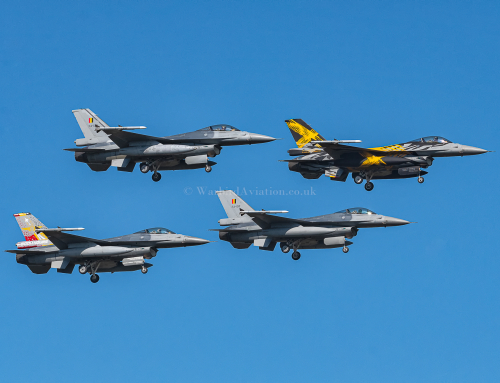
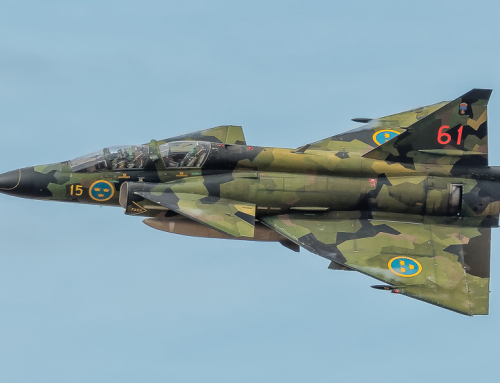
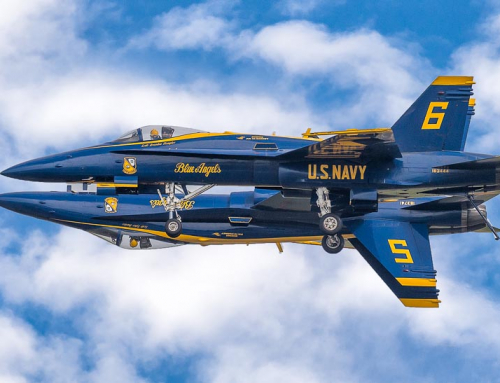
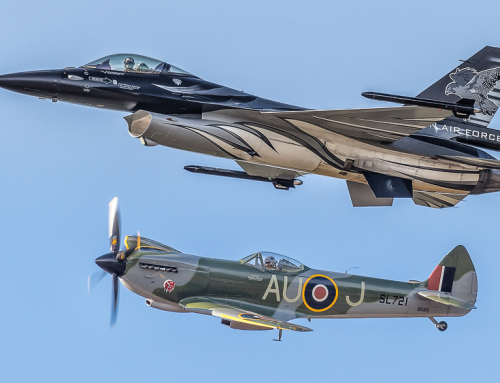
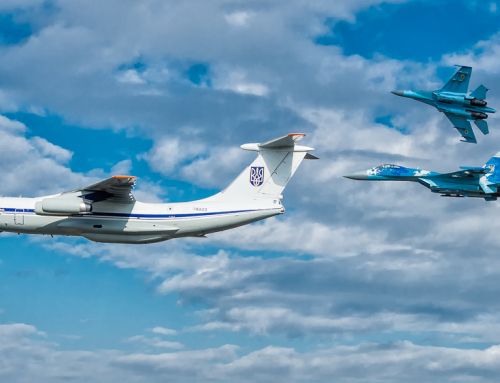
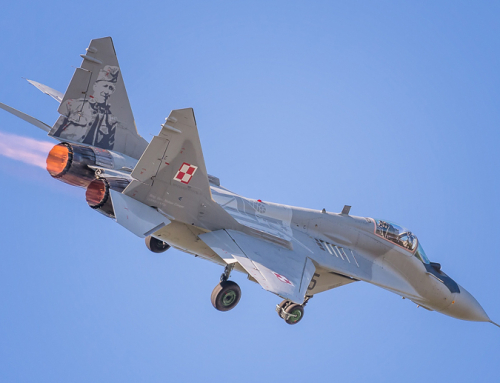
Feel free to add a comment